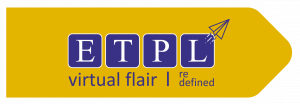The digital transformation in the education sector is gaining momentum and Education ERP Solutions are playing a crucial role in this shift. Especially, no-code and low-code platforms have become increasingly important for schools aiming to simplify operations without technical expertise. With evolving demands in administration, traditional methods are being replaced by smarter, faster, and more efficient systems.
What Are No-Code and Low-Code Platforms?
No-code and low-code platforms are development tools that allow users to create applications using visual interfaces and minimal coding. These platforms enable schools to design and deploy customized software applications without hiring a dedicated IT team. As a result, complex systems like Education ERP Solutions can be managed more easily and at a lower cost.
Streamline your school’s operations with our Education ERP Solutions—get started today!
Why Schools Are Adopting No-Code and Low-Code Education ERP Solutions
A growing number of schools have embraced Education ERP Solutions developed through no-code and low-code platforms. This change has been driven by the need for agility and speed. Moreover, it allows educators and administrators to focus on core tasks rather than being bogged down by technical concerns. With education becoming more dynamic, the flexibility offered by these platforms is unmatched.
Key Benefits of No-Code and Low-Code Education ERP Solutions
Several advantages have been observed when no-code and low-code Education ERP Solutions are implemented:
Faster Deployment:
No-code and low-code platforms help schools set up their ERP systems much quicker than traditional methods. Instead of waiting months for software to be built, schools can create and launch their systems in just a few days. These platforms have built-in tools and templates, so there’s no need to start from scratch or write complicated code. This helps schools respond faster to changes or new needs.
Cost-Effective:
These platforms save schools a lot of money. Since they don’t need to hire a big team of developers or buy expensive computer systems, the overall cost is much lower. Many of these solutions are available online as a service, so schools just pay a small fee to use them. This makes it easier for schools with tight budgets to go digital.
Customizable:
Every school is different, and no-code/low-code ERP systems allow schools to build the tools that match their specific needs. Whether it’s setting up the admission process, creating class schedules, or handling report cards, schools can design the system their way – without needing a developer. This means the system works exactly how they want it to.
Learn More: Why Upgrading to a Modern Education ERP Software is Essential in 2025
User-Friendly:
These platforms are made for everyone—even people who aren’t tech-savvy. Teachers and office staff can use them without needing special training. The screens are simple to understand, and tasks can be done with just a few clicks. This makes it easy for everyone to get started and use the system confidently.
Scalable:
As a school grows or adds new programs, its needs will also change. No-code and low-code ERP systems can grow along with the school. Schools can add new features, connect other tools, or handle more data without rebuilding the whole system. This makes the platform a long-term solution that adapts over time.
Challenges in Traditional ERP Implementation
Before no-code and low-code tools came along, using ERP systems in schools was really hard. Here’s why:
Too Much Coding and Testing
Old ERP systems needed a lot of computer coding. Developers had to build everything from scratch, which took a lot of time. After that, they had to test the system again and again to make sure it worked. Even a small change meant more coding and testing. This made things slow and complicated.
Very Expensive at the Start
Getting started with these systems cost a lot of money. Schools had to pay for software, computers, and tech experts. For small and medium schools, this was just too expensive, so they often gave up on the idea.
Took a Long Time to Set Up
Setting up the system wasn’t quick. It could take months or even a year. That meant schools had to wait a long time before they could actually use the system. This delay made it less useful for schools that needed something fast.
Needed Tech Experts for Everything
Schools couldn’t manage these systems by themselves. They always needed IT experts to install, fix, or update anything. Many schools didn’t have their own tech team, so they had to keep hiring help, which made things even harder.
Because of all this, many schools didn’t use ERP systems at all. But now, no-code and low-code tools have changed the game. They’re easier, cheaper, and faster—so more schools can use them without needing tech skills.
Real-Life Impact on School Operations
Schools that have adopted no-code and low-code Education ERP Solutions have reported noticeable improvements:
Faster admissions processing
Schools using no-code and low-code ERP systems can handle admissions much faster. Parents can fill out forms online, upload documents, and get updates easily. The school staff doesn’t have to do everything by hand, which saves time and helps them handle more applications without any confusion.
Better communication between staff, students, and parents
These systems make it easier for everyone to stay in touch. Teachers can quickly share updates with parents about their child’s progress, homework, or school events. Staff members can also work together better using shared calendars and messages. This means fewer delays and better teamwork all around.
Easy attendance and grade tracking
Teachers can take attendance on a computer or tablet, and it gets saved right away. They can also enter grades directly into the system. This makes it easy for schools to keep track of how students are doing and find any problems early so they can help students do better.
Automated fee collection and reports
With the ERP system, collecting school fees becomes simple and automatic. Parents can pay online, and the system sends reminders and receipts. Schools also get clear reports showing who paid, how much was collected, and what is still due. This saves time and avoids mistakes.
More focus on students
Since the system handles many routine tasks, school staff and teachers have more time to focus on students. They can spend more time planning lessons, helping students, and improving learning activities. This helps students learn better and enjoy school more.
Embracing Education ERP Solutions built on no-code and low-code platforms has become more than just a trend—it is a necessity. These solutions offer schools the flexibility, cost-efficiency, and speed they need to thrive in a digital-first world. As a result, forward-thinking educational institutions are better positioned to meet the evolving demands of education management.
Make your school’s operations easier with eGenius.in smart ERP solutions – save time, improve efficiency, and create better learning experiences. Start today and see how we can help your school grow!
FAQs
1. What are Education ERP Solutions?
Education ERP Solutions are software platforms designed to manage and automate school operations like admissions, attendance, fee collection, and academic records.
2. How does no-code differ from low-code?
No-code platforms require zero coding knowledge, while low-code platforms require minimal coding—making both ideal for non-technical users.
3. Are these ERP solutions secure?
Yes, modern ERP systems include security features like data encryption, user access controls, and compliance with data protection regulations.
4. Can small schools afford these systems?
Absolutely. No-code and low-code Education ERP Solutions are cost-effective and scalable, making them accessible for schools of all sizes.
5. What features should schools look for in an ERP solution?
Key features include student information management, attendance tracking, fee collection, communication tools, and reporting analytics.














